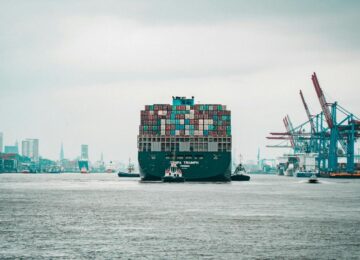Anupama Nair
www.mediaeyenews.com
Financial risk is a type of danger that can result in the loss of capital to the parties who are interested in investing. For governments, this can mean they are unable to control monetary policy and default on bonds or other debt issues. Corporations also face the possibility of default on any debt they undertake but may also experience failure in an undertaking which causes a financial burden on the business. Financial markets face financial risk due to various macro-economic forces, changes to the market interest rate, and the possibility of default by sectors or large corporations. Individuals face financial risk when they make decisions that may jeopardize their income or ability to pay a debt they have assumed.
Financial risks are everywhere and they come in many shapes and sizes, affecting nearly everyone. You should be aware of the presence of financial risks. Knowing the dangers and how to protect yourself will not eliminate the risk, but it can mitigate their harm and reduce the chances of a negative outcome. It is expensive to build a business from the ground up. At some point in any company's life the business may need to seek outside capital to grow. This need for funding creates a financial risk to both the business and to any investors or stakeholders invested in the company.
Credit-risk which is also called as default risk is the danger associated with borrowing money. If the borrower becomes unable to repay the loan, they will default. Investors affected by credit risk suffer from decreased income from loan repayments, as well as lost principal and interest. Creditors may also experience a rise in costs for collection of the debt. When only one or a handful of companies are stressed it is known as a specific risk. The danger, related to a company or small group of companies, includes issues related to capital structure, financial transactions, and exposure to default. The term is typically used to reflect an investor's uncertainty of collecting returns and the accompanying potential for monetary loss. Businesses can experience operational risk when they have poor management or faulty financial reasoning. Based on internal factors, this is the risk of failing to succeed in its undertakings.
Financial risk also denotes the possibility of a government losing control of its monetary policy and being unable or unwilling to control inflation and defaulting on its bonds or other debt issues. Governments issue debt in the form of bonds and notes to fund wars, build bridges and other infrastructure, and to pay for its general day-to-day operations. The U.S. government's debt known as Treasuries is considered one of the safest investments in the world.
The list of governments that have defaulted on debt they issued includes Russia, Argentina, Greece, and Venezuela. Sometimes these countries only delay debt payments or pay less than the agreed-upon amount and it causes financial risk to investors and other stakeholders.
Several types of financial risk are tied to financial markets. As mentioned earlier, many circumstances can impact the financial market. As demonstrated during the 2007 to 2008 global financial crisis, when a critical sector of the market struggles it can impact the monetary wellbeing of the entire marketplace. During this time, businesses closed, investors lost fortunes, and governments were forced to rethink their monetary policy. However, many other events also impact the market.
Volatility brings uncertainty about the fair value of market assets. It is seen as a statistical measure, volatility reflects the confidence of the stakeholders that market returns, match the actual valuation of individual assets and the marketplace as a whole. Measured as implied volatility (IV) and represented by a percentage, this statistical value indicates the bullish or bearish market on the rise versus the market in decline view of investments. Volatility or equity risk can cause abrupt price swings in shares of stock.
Default and changes in the interest rate of the market can also pose a financial risk. Defaults occur mainly in the debt or bond market as companies or other issuers fail to pay their debt obligations, harming investors. Changes in the market interest rate can push individual securities into being unprofitable for investors, forcing them into lower-paying debt securities or facing negative returns.
Asset-backed risk is a probability that asset-backed securities, pools of various types of loans may become volatile if the underlying securities also change in value. Sub-categories of asset-backed risk involve the borrower paying off a debt early, thus ending the income stream from repayments and significant changes in interest rates. Individuals can face financial risk when they make poor decisions. This danger can have wide-ranging causes from taking an unnecessary day off at work to investing in highly speculative investments. Every undertaking has exposure to pure risk, dangers that cannot be controlled, but some are done without fully realizing the consequences.
Liquidity risk comes in two flavors for investors to fear — securities and assets which cannot be purchased or sold quickly to cut losses in a volatile market. It is known as market liquidity risk and this is a situation where there are few buyers but surprisingly, not many sellers. The second risk is funding or cash-flow liquidity risk. Funding liquidity risk is the possibility that a corporation will not have the capital to pay its debt, forcing it to default, and harming the stakeholders.
Speculative risk is one where a profit or gain has an uncertain chance of success. Maybe the investor did not conduct proper research before investing, or reached too far for gains, or invested too large of a portion of their net worth into a single investment. Investors holding foreign currencies are exposed to current risk because different factors, such as interest rate changes and monetary policy changes, can alter the calculated worth or the value of their money. Meanwhile, changes in prices because of market differences, political changes, natural calamities, diplomatic changes, or economic conflicts may cause volatile foreign investment conditions that may expose businesses and individuals to foreign investment risk.




























